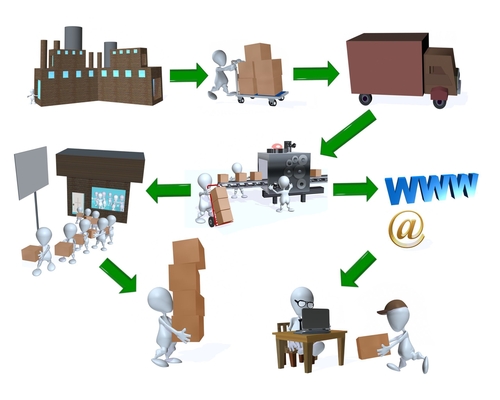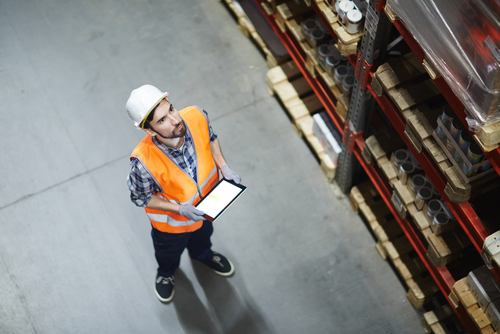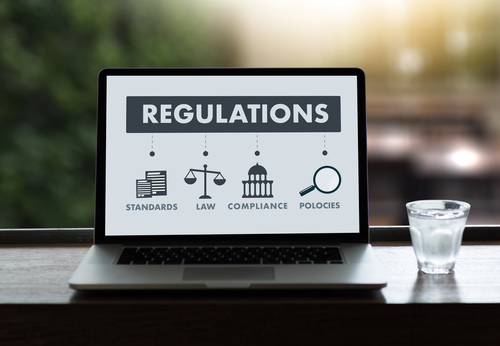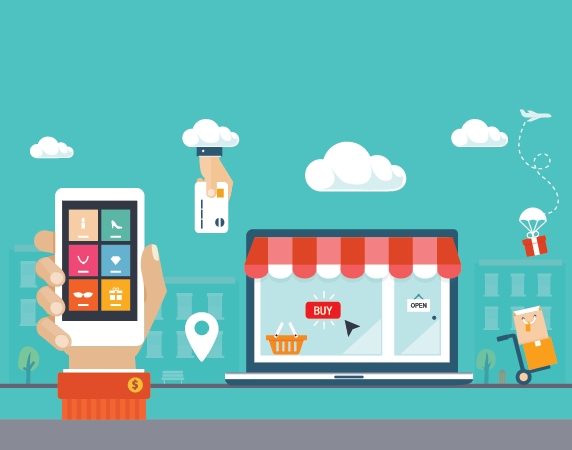Tag: retail technology
Technology is now an inevitable part of the retail landscape. Any enterprise worth its byte would now have an integrated POS and CRM suite, with features to take care of the entire gamut of operational functions, including sales, transactions, inventory control, suppliers and ordering management, and more. Many establishments integrate their marketing and other functions as well, rendering a comprehensive enterprise-wide system. However, over and above such infrastructure backbone, what matters is the design of the system.
While the importance of the “human touch” can never be understated, many enterprises place to a stake on the human effort. Depend on such “human touch” to advance a process leaves such businesses susceptible to various risks, such as human error, communication gap, accountability issues, disjointed experiences in different stores leading to poor customer satisfaction, and violation of compliance regulations owing to an oversight.
A systems-driven approach is a key to overcome such issues. Devising sound, robust, and foolproof systems, and overlaying the human element, or the personal touch, above such systems, offers the best of both worlds.
The Superiority of Systems-Driven Approach
A system driven approach, with well-drawn out processes for all functions, complete with checks and validations improves employee productivity, deliver organizational efficiency, improves the bottom line, and results in better customer experiences. In fact, the various time-tested quality standards, such as Total Quality Management and ISO primarily mandate establishing systems and following it.
Systems driven approach offers as clear cut process for everything, and ensures all validations and checks are implemented at the right time. This frees the business from the risks of human error or oversight. The best of effort notwithstanding, humans are prone to make errors. In the retail business, for example, heavy rush may result in the shop-floor executive skipping some items in billing, some ordered and paid-for items falling off the packing and shipping delivery chain, or an important customer being ignored.
The necessity of sound systems manifests itself, especially in inventory management. Relying on human estimation or manual practices may result in excess inventory or shortage of inventory, both of which suck the winds of a retailer. The National Retail Federation estimates U.S. retailers losing $224 billion owing to excess inventory and $45 billion from having inventory in stock. A systems based approach, which automates the inventory handling process, and ensures optimal inventory for various scenarios help cut down such losses, and in the process deliver customer delight.
A systems-driven approach also promotes accountability. The system fixes specific roles for everyone, broken down into actionable tasks. The tasks are transparent to everyone in the supply chain, with the option to track progress. The employees get role clarity and the right tools to perform their tasks easily. Supervisors and managers may step in at critical points to resolve trouble-spots, or even pre-empt issued proactively.
Another key blind spot for businesses, especially retail businesses, is gaps in communication. Lack of seamless communication systems makes the enterprise dysfunction. It leads to various ills, such as hold-up of processes and the supply chain for want of information on how to proceed, employees doing a wrong thing owing to lack of clarity of instructions, executives providing incomplete, vague, or misleading information to customers, and more.
The two basic prerequisite to smoothing the communication flow is:
- Eradicating data silos and link the entire gamut of data repositories to a single pane or control
- Establishing a robust single platform for collaboration
Most enterprises underestimate the implications of compliance issues. Regulations may seem like a drag, but failure to comply with regulations, and filing timely reports can result in heavy fines, loss of reputation, and may even sound the death-knell of the business. Many regulations make for sound security and control practices in its own right. Establishing systems make it possible to embed the regulatory requirements into the process, and also generate compliance reports easily.
The Other Side: The Ills of the Superiority Driven Approach
An often raised grouse against the systems driven approach is its inflexibility and its emphasis on the process over customer convenience. As the adage goes, following the system rigidly may lead to the classic case of being “penny wise, pound foolish.” The fault, however, in most cases, lies more with poorly designed systems than the approach itself.
Consider the case of customer care where the customer seeking to raise a service request or return an item is greeted with an automated menu and has to press an infinite number of options, before getting to speak with a human voice, if at all. The long delay to resolve what may be a simple matter would be out rightly frustrating. Instances of such insensitive menus having driven away customers are far too many. Such issues put the spotlight on the systems design. The option in the above example would be to provide two streams, a self-service option with automated menus, and an option to hear a human voice directly when the human agent guiding the customer to select the correct options. Another option would be to offer different numbers for different issues, reducing the waiting time. Yet another option is to offer multiple modules, such as email, live chat, and more, to reach out to customer support, which would allow frustrated customers to try other channels.
Another often raised drawback of the systems driven approach is the inability of the business to seize the moment. A high-value customer may have a special request, which the rigidity of the system may not facilitate. The customer, offended, may take his business elsewhere, or the business may simply lose a good opportunity. Consider the case of a regular high-value customer wanting to hold the last piece of a product for a day, before he makes up his mind, which the system may not allow. The solution is to build flexibility into the system, allowing the “humans” managing the system, to exercise options in all possible eventualities, with a proper chain of authorizations.
It is also pertinent to ensure the system is flexible and scalable. No business can expect to survive by remaining static in today’s highly fluid business environment. Only systems with inbuilt flexibility and scalability to adapt to different needs and situations as they emerge would succeed. Likewise, the onus is on the stakeholders to review the system from time-to-time and make changes as required.
Why Systems Based Approach Works
An intuitive system which offers effective coordination, sync, and validation makes the business process more transparent and efficient. Such a system, delivered to relevant stakeholders in the form of intuitive smartphone or tablet based apps, would:
- Make explicit to all stakeholders what exactly needs to be done at their level, and at what time.
- Render role clarity to employees and other stakeholders.
- Provide tracking and monitoring facility, for managers and supervisors to remain in control, and at the top of their game.
- Enable field service agents, on-the-move managers, and others, to remain connected always, even from geographically isolated places, and when commuting, reducing hold-ups, accelerating the pace of work, and seizing extremely time-limited opportunities.
- Send out notifications to the main office, to managers, floor level supervisors, or other stakeholders, keeping them updated in real time of any critical incident or action point which requires action or resolution before the supply chain or workflow can proceed.
- Track and collect payments on a timely basis, leading to optimal allocation of resources
- Automate route processes, right from promotional emails to reminders, and from updating accounts to scheduling duty rosters for customer support agents, freeing the enterprise from non-productive “staff” functions. Enterprises can focus their energies on their core business instead.
Mobile apps integrate and pull in data from the entire gamut of enterprise systems and repositories, from the CRM suite to the ERP system, and from accounting software to HRIS, and more. It delivers comprehensive, up-to-date-information, free from data silos and other inefficient plaguing manual handling and analysis of data. It efficiently links various aspects of business operations, enabling the enterprise to work seamlessly and with optimal efficiency. The net result is happy employees, happy customers, and a well-oiled system which seizes all opportunities which come its way.
Stay up to date on what's new

Featured Blogs
Stay up to date on
what's new



Talk To Our Experts
The retail market has seen a drastic change from physical stores to online sales platforms. With the advent of the internet and the freedom to access it from anywhere, brick-and-mortar stores have turned into a digital retailer and new breed of e-retailers have arrived. This new e-retailing option provides users access to a virtual mall of sorts, at their fingertips. The rapid digitization is benefiting both retailing sectors to reach out to mass audiences and the customers to get access to products and brands worldwide. Such accessibility enables them to attract customers worldwide and take their game up a notch higher.
Retail sectors have now access to a humungous amount of Big Data that can be further used to reach out to larger audiences. Omnichannel marketing strategies and some new-age technology can work wonders at boosting the customer experience. The adoption of the said technology in the improvement of marketing campaigns and augmenting supply chain operations helps in offering better success rate.
Analytics – The Way Ahead for Retail
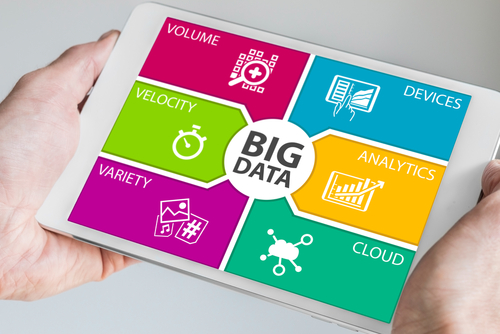
There is a fast-paced growth in retail consumption due to urbanization. Customers have better income and access to technology to keep changing their preferences. Big Data and Analytics are helpful when it comes to studying these changing patterns in customer preferences and behaviors. It also helps retailers to change their business model and rethink strategies to stay ahead in the game. The idea is no longer targeting a group of audience but offering personalized solutions for everyone. As per MRC statistics, the global retail analytics market stood at $2.25 billion in 2015 and is likely to skyrocket up to $7.47 billion by 2022 with a CAGR of 18.7%.
Understanding the Customers

Using predictive analytics to understand how the customer’s function, react, and purchase is highly critical for every retailer. Understanding their purchasing pattern and predicting future behavior can help send targeted advertisements and offers to the customers. Such unique targeting provides the opportunity for retailers to better engage with their consumers directly. Using POS systems, social media interactions, and online shopping patterns, retailers can achieve a deeper insight as to what sells. It also helps them understand how to model their stores, add inventory to their warehouse and reach more individuals.
Excellent Customer Experience

Companies that use data analytics can target customers as per their browsing and purchase history. Understanding what exactly your customer requires is a win-win situation for both the parties. These researched targeted products can be sent to users via customized emails and SMS to pique their interest. Targeting marketing provides them with options that predict their purchase intent. It is important that in-store management can provide insight driven shopping experience.
Technologies to be Adopted
Using Big Data and Analytics largely depends on what kind of technology is used by Retailers. Apart from having just POS data analyses to predict customer behavior, data can be even used to make pricing and marketing decisions. Some of the technologies that offer customers a smooth shopping experience while helping the retailers enhance their services are –
1. Radio Frequency Identification (RFID) – Radio Frequency Identification (RFID) is changing the way businesses track inventory and assets. This technology is hired by companies for on-shelf inventory management. But there is more to it than meets the eye. It can be smartly used to place items on the shelves where the consumer is most likely to go. These can be items that are limited to the season or on sale.
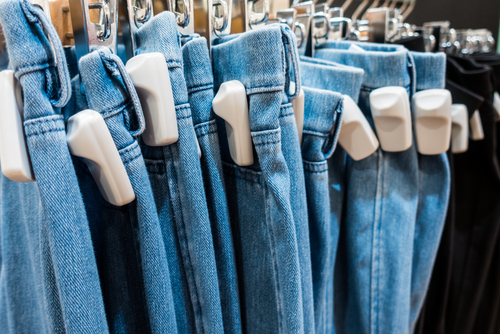
2. Wi-Fi Analytics – Here, data patterns are created with respect to real-time customer behavior inside the store. It helps in understanding the clusters of the store where maximum customer time is spent and which zone has the highest purchase. Such intelligent analysis helps in determining what the inventory customers are seeking. The store can change their inventory or position of items accordingly to make the customer’s shopping experience a breeze.

3. Beacon analysis – These low-cost Bluetooth sensors are a must for every retailer. They can be placed strategically inside the store to send proximity marketing based on customer location inside. Customers who are seeking an item can benefit not just from options provided but also avail discounts and coupons offered via it.
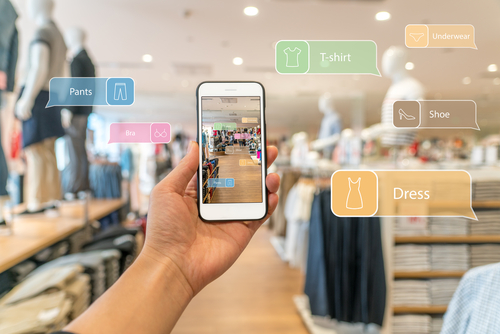
Customers love being pampered and the best way to do that is to make their life easy, not just around the store but also via marketing to invite them. Grow your retail firm multifold by seeking our expert advice and IT solutions to make the most out of Big Data and Analytics.
Stay up to date on what's new

Featured Blogs
Stay up to date on
what's new



Talk To Our Experts
The retail industry is one that constantly strives to stick to margins. It’s a live or die scenario for most retail companies these days, with their managers struggling to maintain their costs low and revenues high. That’s a pretty hard thing to maintain, considering the level of competition in the industry. Every retailer is always on the lookout for ways to lure more customers into their nets while at the same time keep their costs in check. And technology has always been a means for them to achieve both these goals.
Technology spending in the global retail sector is predicted to reach $203.6 billion in 2019. Ever-changing customer expectations are forcing retailers to digitally transform their businesses. Customer experience, inventory management, supply chain management and the like are some areas where technology is being used and improvements are being made. For example, wireless technology is something that has played a huge role in transforming the retail industry, by allowing devices and people to communicate with one another from anywhere in the world. Although, its adoption has been limited by a number of factors like security concerns, deployment costs etc.

Considering the race for retail companies to bag the most number of consumers, it is almost inevitable that they make use of technology if they have to stay ahead. It is indeed important to adopt new technologies in retail business, as customers always go for maximum ease and efficiency when it comes to shopping, and if you fall short, you are just going to get phased out.
Just like customer experience and supply chain management, there are various aspects in retail where you can leverage technology to increase productivity and profits. Here we discuss few such areas, where you can make use of technology and streamline your business.
Related Read: Top Tech Trends Every Retailer Must Implement NOW
Point of Sale (POS) AND Payments
The physical location where goods are sold to customers – the point of sale – was traditionally the place where customers used to stand in line for hours to make a purchase. But studies have shown that in long lines, one out of ten customers would leave without making a purchase. Long lines may also cause resentment among customers which makes them less likely to visit the store again.
Using technology can help prevent these issues in several ways. For example, with the help of handheld computers, scanners and printers with integrated credit card readers, the point of sale can be made to be fully mobile and hence a lot faster. During times of high sales, these mobile POS terminals can be used throughout the store at several places so that customers can get their stuff billed at any of those counters quickly.
Moreover, the sales personnel with these handheld POS terminals can also process transactions while moving through checkout lines in order to accelerate the checkout process as well. For customers with lesser products, their transactions can be completed while they are still in their lines. For other customers, their products can be scanned with a barcode scanner while they are in their line and tickets can be printed with prices along with a master barcode for the entire merchandise.
On reaching the counter, only the master bar code needs to be scanned for the total price. This eliminates the need for the checkout clerk to process each item individually, thereby hastening the entire process.
Contactless Payments
Contactless payments are one of the most beneficial technological advancements in the world of payments. These help in making check out processes faster in retail stores as well. Contact payment systems are basically credit cards, debit cards, smart cards or even devices like smartphones and tablets that make use of Radio Frequency Identification (RFID) or Near Field Communication (NFC) technologies to make secure payments. They have an embedded chip and an antenna that allows users to simply wave their card over a reader at the POS terminal, and make their payment.
They don’t even have to sign a receipt or enter passwords or PINs (Personal Identification Numbers) as is the case with normal debit or credit card payments. This eliminates the need for customers to deal with the problems of handling cash or remembering their PINs. Also, speeds up transactions, which makes it one of the most preferred means of making payments for customers.
According to several pieces of market research, it has been found that sales volumes have increased as a result of fast transactions in a number of retail stores. A report by Chase shows that the time spent by customers at the POS is reduced by 30% to 40% and according to an American Express study, contactless transactions have been found to be 63% faster than cash and 53% faster than a traditional credit card transaction.
Hence, it is needless to say, how much of an impact contactless payments can have on improving business.
Customer Service
When it comes to customer service, one of the areas where the most number of issues arise, besides long lines in checkout is regarding the lack of store associates to direct customers or give more information about their product or store. This is where technology comes in handy. Self-help kiosks can be placed in stores, where the customers themselves can access product information, store information, inventory information (both for that particular store as well as other nearby stores in their chain), store directory (so as to locate what product is placed where) and the like.
Many retailers are already using such self-help kiosks instead of additional sales associates, which have helped them save a lot on costs. Some of these also have “get help” buttons, which alert nearby store assistants when pressed, and enable customers to talk to them through their voice-enabled Personal Digital Assistants (PDAs). Such kiosks allow customers to find answers to their questions on their own without having to look around for store assistants, thereby improving customer service.
E-commerce sites
Another area where technology can be leveraged to improve customer service is online shopping sites. Various improvements such as rotating and interactive product displays and other kinds of personalization are already helping retailers deliver a more delightful shopping experience online. Such personalized online experiences put together with in-store personalization provides customers with the most satisfying experience.
Augmented Reality
Some companies like IKEA, are also providing added services through their catalog, by making use of augmented reality to give customers a virtual view of products such as furniture in a living room and the like, so that they can make better decisions when choosing a product. Augmented reality is one of the best ways to improve customer experience and increase sales.
Customer Feedback
In-store feedback – one of the most effective ways to measure customer satisfaction can be made more effective with technology. Retailers can have wireless tablets and notes placed in their stores that offer easy-to-fill feedback forms for customers. Customers would always be happy to fill feedback forms if offered incentives for it, like gift coupons and discounts.
Related Read: Ways to Leverage Smart IT Solutions for your Retail Business
These are just some of the ways in which technology can be used in the retail business to improve profits. Even though a lot of these technologies are not being adopted by a number of companies due to various reasons, it is pretty clear now how important they are. As a matter of fact, with time a lot of the traditional methods in retail are sure to get phased and you will be left with no option but unfamiliar technology.
Relying on a proficient technology solutions provider like Fingent can help grow your retail business by integrating technology. Get in touch with our consultants today to map out the right technology solutions that provide your retail business a competitive edge.
Inventory Management
Management of inventory, both in-store as well in the warehouse has always been a major area of expense for retailers. Merchandise must be entered into inventory, tracked on movements and removed from inventory, on being sold. Also, real-time inventory information needs to be available in stores so as to plan the purchase of products, as and when they go out of stock. A total inventory management system that is integrated with the POS can put things in order to a large extent.
As the products are sold through the POS, they also get removed from the inventory and are updated across all systems that use such inventory information. A large clothing retailer makes use of hand-held computers or kiosks integrated with the central inventory system, which can be used to place orders to the warehouse. This is to directly deliver a product to a customer’s house because it was not available in-store when the customer asked for it.
In shipping, wireless barcode scanners can be used at the receiving place to enter stock directly into the inventory, as they get delivered, with the warehouse location of the items also being able to be tracked instantly. Many retailers are already using DEX/UCS (Direct Exchange/Uniform Communication Standard) to allow the delivery people to directly enter invoices into a store’s accounting system, thereby simplifying billing as well as accounting.
Price Auditing
Price auditing has always been a time-consuming process for retail companies. Looking up price labels on products and verifying them with the prices charged to the customers is definitely a hard thing to do. With wireless devices like a tablet or a notebook, the store associate can check the price labels of all the products by scanning the shelf labels using a barcode scanner. These devices can be linked to the store’s central database of products which are also linked to the POS terminals in order to track the prices of products being sold. If there are any differences between the POS prices and the database prices or the shelf prices, corrective action can be taken immediately. Hence, accurate pricing can be achieved and a lot of time can be saved, plus it adds to the trust factor for customers as well.
These are just some of the ways in which technology can be used in the retail business to improve profits. Even though a lot of these technologies are not being adopted by a number of companies due to various reasons, it is pretty clear now how important they are. As a matter of fact, with time a lot of the traditional methods in retail are sure to get phased and you will be left with no option but unfamiliar technology.
Here is a video of the smart malls of the Future:
Stay up to date on what's new

Featured Blogs
Stay up to date on
what's new



